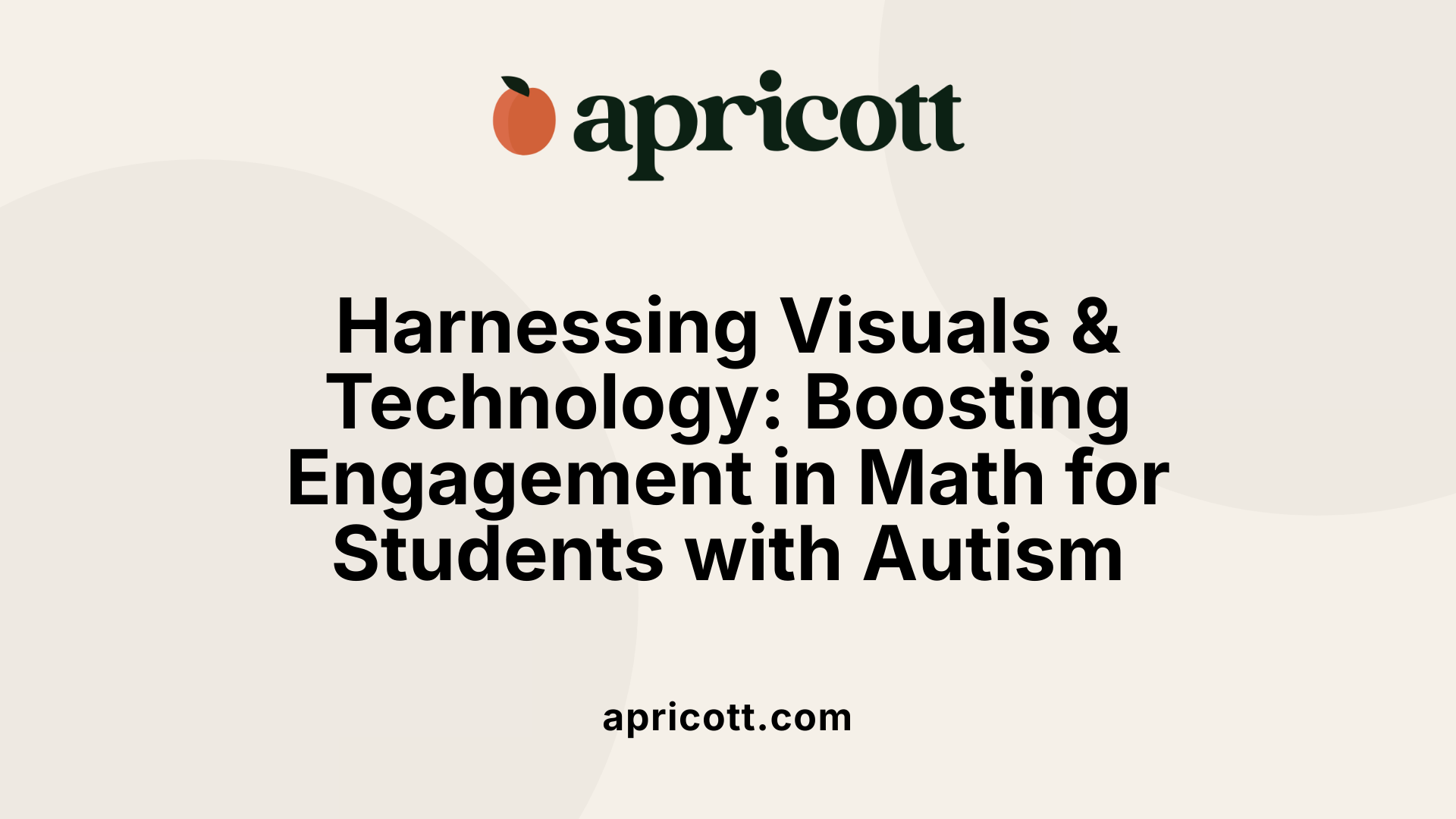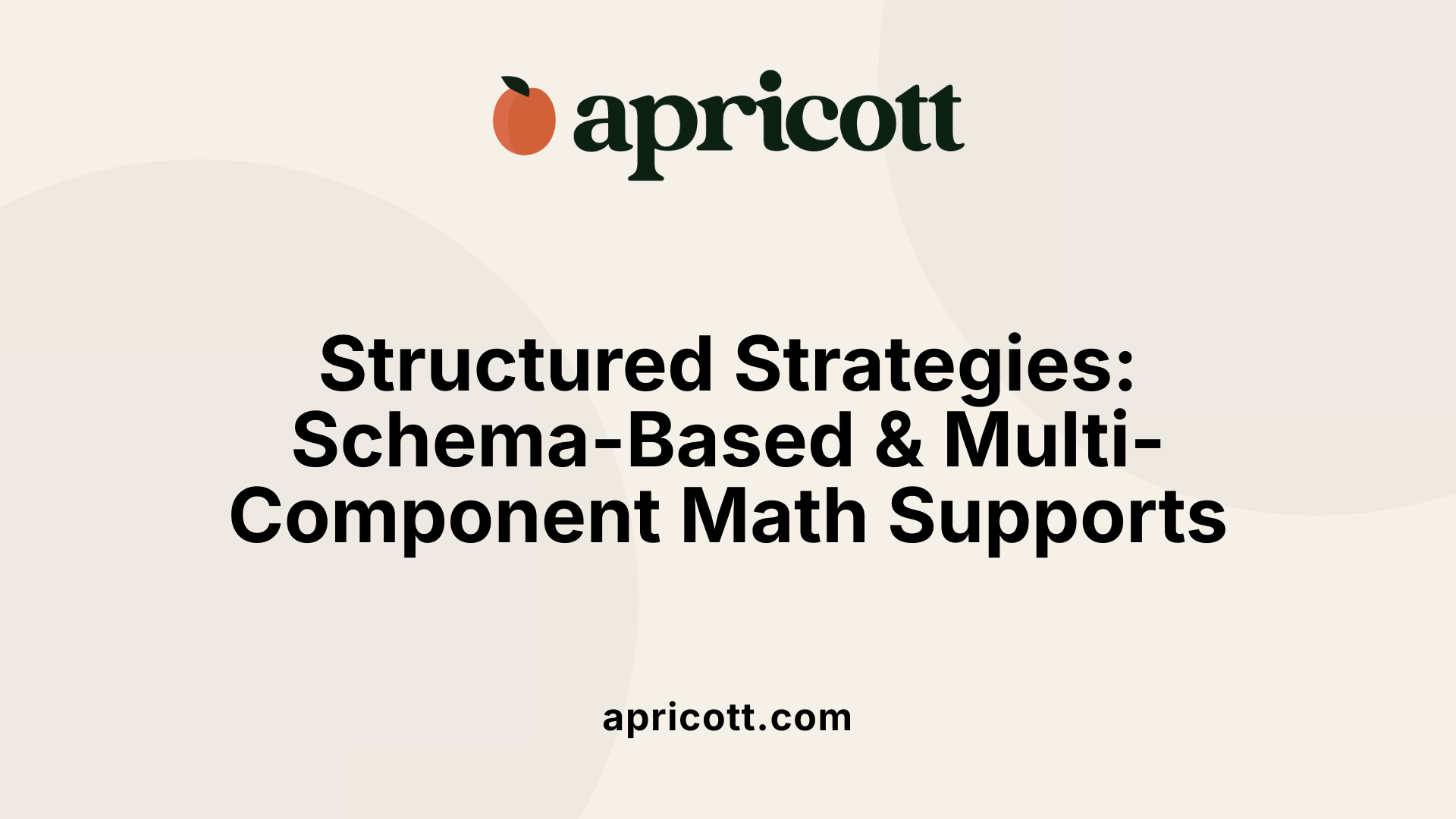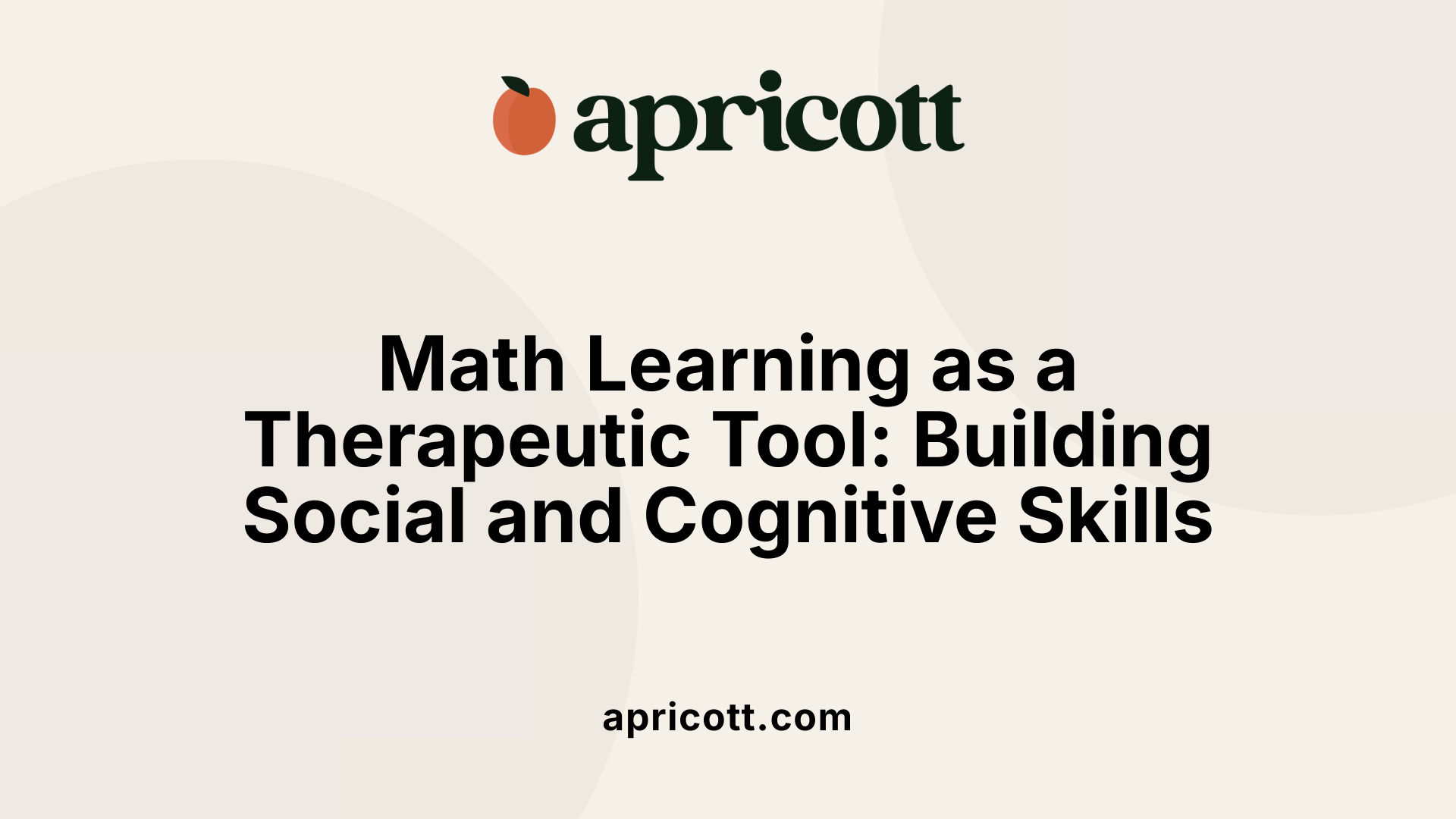December 2, 2025
Innovative Strategies Enhance Math Learning for Students with Autism
Teaching mathematics to students with autism spectrum disorder (ASD) presents unique challenges and opportunities. With cognitive and communicative differences common among these learners, educators and therapists must employ specialized, evidence-based strategies that accommodate diverse needs and leverage strengths. This article explores scientifically validated instructional approaches and technological innovations that foster mathematical understanding for children and adolescents with autism, highlighting their therapeutic benefits and practical applications.
Applied Behavior Analysis (ABA) therapy is a science-based approach focused on understanding and modifying behavior using techniques like positive reinforcement and analyzing environmental triggers. It aims to increase helpful behaviors such as communication, social skills, daily living abilities, and academic skills, while reducing behaviors that interfere with learning. ABA programs are highly individualized and designed by trained behavior analysts. They track measurable progress by collecting data over time. ABA is supported by substantial research showing significant improvements in language, socialization, independence, and overall quality of life for many individuals with autism. In educational contexts, including mathematics, ABA helps students with autism develop essential skills by breaking tasks into manageable steps and reinforcing successful learning.
ABA therapy is delivered by trained professionals like Board Certified Behavior Analysts (BCBAs), Registered Behavior Technicians (RBTs), and Board Certified Assistant Behavior Analysts (BCaBAs). BCBAs have graduate or doctoral-level education, complete specific coursework and supervised experience, and pass certification exams. They design and oversee individualized treatment plans. RBTs are paraprofessionals certified to implement ABA interventions under BCBA supervision, performing tasks such as data collection and reinforcing positive behavior. BCaBAs assist BCBAs by helping with assessments and training. These professionals operate in diverse settings such as schools, clinics, hospitals, and private practices, adhering to ethical standards and evidence-based methods.
ABA therapy is personalized using comprehensive assessments that include observation, functional behavior analysis, and family input to identify a student's strengths, challenges, and motivators. A BCBA then crafts a customized treatment plan targeting the individual's specific goals, including academic areas like math. The plan uses proven interventions to teach new skills, manage problem behaviors, and reinforce positive progress. Continuous data collection allows ongoing monitoring and adjustment of strategies to optimize learning. Family members are often trained to support learning beyond therapy sessions, ensuring skills generalized in real-life settings. This individualized, data-driven process maximizes engagement and effective skill acquisition, including mathematical problem-solving skills critical for students with autism.

Research robustly supports that students with extensive support needs (ESN), including those with autism spectrum disorder (ASD) and intellectual disability (ID), can achieve meaningful gains in mathematics through scientifically validated instructional methods. A meta-analysis of 33 studies revealed moderate to large effect sizes for various math interventions among students with ASD, indicating dependable benefits regardless of specific learner or setting variables.
Systematic and explicit instruction emerges as a critical foundation for effective mathematics teaching to students with ESN. Studies demonstrate strong connections between math outcomes and approaches that carefully structure lessons with clear, direct teaching of concepts and procedures. Such instruction often involves breaking down skills into manageable components and using consistent, scaffolded practice.
Several well-researched strategies have proven effective in diverse ESN populations:
These strategies are often used in combination, creating comprehensive support packages that cater to individual learning needs.
Empirical evidence shows these strategies are effective across a broad range of students with ESN, including varying ages, comorbidities, and mathematical proficiency levels. Instructional interventions have been successful in one-on-one as well as small group settings, improving discrete mathematics skills and problem-solving. Tailoring instruction to incorporate student interests (such as themes around dinosaurs or robots) enhances engagement and learning outcomes, highlighting the importance of relevance alongside scientific rigor.
Overall, the research underscores that deliberate, tailored, and evidence-based practices are fundamental to advancing mathematics education for students with extensive support needs, paving the way for improved skills and greater confidence in math activities.

Children with autism often struggle with abstract thinking and mathematical language. The complexity of math terms, which can have multiple meanings, adds to their confusion. This difficulty can impede their ability to grasp abstract mathematical concepts, making it essential for educators to tailor instructional methods carefully.
Effective math teaching for students with autism begins with concrete approaches. Using hands-on materials and visual aids, such as pictures and objects, helps learners make sense of mathematical ideas. Imagistic supports ground abstract concepts in tangible experiences, thereby enhancing understanding and retention.
Instruction should gradually move from concrete experiences to more abstract symbolic representations. This systematic progression allows students to build a strong foundational understanding before handling symbols and operations. Providing clear, step-by-step operations helps ease this transition, supporting students in internalizing mathematics methods.
This teaching progression aligns closely with educational theories like Bruner’s, which advocates for learning through enactive (hands-on), iconic (imagistic), and symbolic stages. By scaffolding math learning in this order, educators address the developmental needs of students with autism, fostering both comprehension and confidence in their math skills.

Video modeling, particularly through devices like iPads, has been shown to improve mathematical problem-solving and skill retention in adolescents with autism. Techniques such as point-of-view and video self-modeling allow students to observe and replicate effective problem-solving behaviors. These technology-based strategies provide consistent, visual demonstrations that enhance understanding and motivation.
Adapting math problems to align with a child’s special interests significantly boosts engagement and on-task behavior. For example, problems themed around dinosaurs or space tap into common visual strengths in children with autism, making abstract concepts more relatable. Incorporating hands-on activities, like LEGO sorting or robotics measurement projects, bridges the gap between abstract ideas and concrete experience, leading to better math comprehension.
Educational games themed around a child’s interests—such as train scheduling apps or animal farming simulations—hold great promise for motivating and engaging learners with autism. Visual aids linked to these interests reinforce accuracy by leveraging the child's innate preference for visual information. These interactive resources make learning enjoyable and more accessible, further promoting mathematical understanding.
Combining technology with interest-based content enhances students' enthusiasm and accuracy in math tasks. Visual supports and themed activities increase engagement by connecting learning materials to the child's world, while technology provides consistent and interactive practice. Together, these elements create a dynamic learning environment that motivates students with autism and contributes to measurable gains in their math skills.

Schema-based instruction uses diagrams and structured problem-solving approaches to help students with autism spectrum disorder (ASD) understand and solve mathematical word problems. These visual diagrams organize information clearly, enabling students to identify problem types and apply appropriate solution strategies effectively.
Graphic organizers break down complex math problems into manageable parts, improving comprehension and organization. Task analysis involves decomposing tasks into smaller, teachable steps, making learning more systematic and accessible for students with extensive support needs (ESN).
The system of least prompts gradually reduces assistance, encouraging independent problem-solving. Response prompting during small-group instruction helps students focus on discrete skills by providing immediate, tailored guidance that supports mastery of mathematical concepts.
Educators often integrate several strategies—such as schema-based instruction, graphic organizers, explicit instruction, and technology aids—into comprehensive packages. This multimodal approach addresses diverse learning needs, enhancing engagement and skill acquisition for students with ASD, although isolating the impact of each component can be challenging.
Meta-analyses of 33 studies report moderate to large effect sizes for interventions using multiple representations, video modeling, schema-based instruction, and drill practice. These findings affirm the efficacy of combined evidence-based strategies in improving math problem-solving skills across various learner profiles and educational settings.

Math education extends beyond cognitive skill-building for children with autism; it also plays a therapeutic role by promoting mental organization. Learning mathematics requires sequencing steps, pattern recognition, and structured problem-solving, all of which can help foster overall cognitive clarity. This structured mental engagement often supports better social adaptation, helping students generalize organizational skills to everyday social interactions.
Integrating math learning with social skill development can be achieved through group discussions and peer-supported activities. For instance, peer-supported number talks in preschool programs adapt discussions to a child's interests and use visual supports, facilitating both mathematical understanding and social communication. Working collaboratively encourages verbal interaction, turn-taking, and cooperative problem-solving, nurturing social capabilities alongside academic skills.
Hands-on activities themed around students’ special interests have shown significant positive effects on engagement and understanding. Examples include LEGO sorting exercises or measuring projects involving robots, which connect abstract math concepts to tangible, meaningful experiences. These concrete approaches help bridge the gap between symbolic math and real-world application, especially benefiting children with autism who often respond well to visual and kinesthetic learning modes.
By linking math instruction to therapeutic goals and social interaction, educators can create more motivating and impactful learning experiences for students with autism, encouraging skill development across multiple domains.
Many people believe Applied Behavior Analysis (ABA) therapy is rigid, punitive, or only useful for young children. Contrary to these misunderstandings, modern ABA focuses on using positive reinforcement and personalized, naturalistic interactions that respect individual needs.
Another widespread myth is that ABA is solely intended to cure autism. In truth, ABA supports developing practical skills and coping strategies to enhance independence and quality of life. It is a flexible approach applied across all ages and various conditions, not exclusively to autism.
ABA therapy is far from one-size-fits-all. It adapts to each learner’s strengths and challenges, using positive reinforcement to encourage desired behaviors and skill acquisition. These methods often take place in play-based or natural settings, making learning enjoyable and relevant.
Programs address a wide age spectrum—from toddlers to adults—tailoring interventions to ongoing developmental needs rather than fitting a strict schedule or setting.
ABA’s purpose is skill development rather than altering or "curing" an individual’s neurological identity. It prioritizes empowering learners to be more independent and to navigate daily life, communication, social interaction, and academic tasks effectively.
Contemporary ABA therapy is backed by robust scientific research that advocates humane, respectful, and individualized education plans. This approach aligns well with evidence-based strategies proven effective for students with extensive support needs, including those with autism spectrum disorder (ASD). Families and educators are encouraged to seek programs emphasizing scientific validation, positive support, and customization to meet each learner’s unique educational journey.
Teaching mathematics to students with autism requires a nuanced understanding of their cognitive, behavioral, and motivational profiles. The integration of Applied Behavior Analysis principles with diverse instructional strategies—ranging from concrete and interest-based activities to technology-driven and schema-based interventions—offers a promising path to enhance math learning outcomes. Emphasizing personalization, visual supports, and socially engaging approaches ensures that math education is not only accessible but also meaningful. Addressing misconceptions about ABA therapy and championing evidence-based practices further strengthens the educational landscape for these learners. Future research and practice must continue to refine and expand these approaches to foster independence, confidence, and social integration through mathematics.